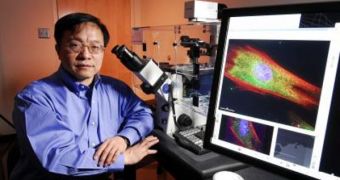The US National Science Foundation (NSF) has recently awarded a group of American universities a $25 million grant for the setup of a new center for studying the interactions that form within cell clusters in extensive detail. The Emergent Behaviors of Integrated Cellular Systems (EBICS) Center will be a collaboration of researchers from the Massachusetts Institute of Technology (MIT), the University of Illinois at Urbana-Champaign (UIUC), and the Georgia Institute of Technology (Georgia Tech). Studying complex biological systems will be the main focus of EBICS' activity, the NSF announces, but researchers here will also focus on creating additional education programs based on the knowledge obtained from investigations.
“Ultimately, we envision being able to create biological modules – sensors, processors, actuators – that can be combined in various ways to produce different capabilities. If we are successful, this will open up an entirely new field of research with wide-ranging implications, from regenerative medicine to developmental biology,” explains the founding Director of the Center, Roger Kamm. He is also the Germeshausen professor of mechanical and biological engineering at MIT. EBICS will also be responsible for integrating traditionally-underrepresented research groups in its investigations.
“Critical to the successful design of engineered cellular systems is a fundamental understanding of interactions between cells and their environment, their control by biochemical and mechanical cues, and the coordinated behavior of functional biological machines,” adds the Georgia Tech and Emory University Wallace H. Coulter Department of Biomedical Engineering Robert A. Milton Chair in biomedical engineering, Gang Bao. These highly sophisticated biological machines will be constructed at Georgia Tech. The university will receive about $1.6 million per year to support EBICS activities.
At this point, the Center features four major research areas, all of which are coordinated by Bao. The first refers to investigating how cells modify their ultimate states and biological behaviors in response to various, environmental biological, biochemical and physical cues. The second avenue of research deals with discovering the nature of cellular communications, especially in clusters that are formed from a lot of individual building blocks. The way functional coordination between cell group appears is also a target of this second research area.
The third direction of study refers to developing simple cellular machines, capable of conducting increasingly complex tasks. Some of these objectives include expressing and transporting proteins, processing information, as well as sensing changes in their environment. The fourth and final research direction deals exclusively with investigating, developing and constructing all the technologies that would make it possible for all the other three objectives to be met within a reasonable time line.
“For the US to be competitive globally in the 21st century it must leverage the inherent strength of its diverse population. The more diverse a science and engineering team is, the more likely will the advances in the technology created be truly innovative,” says EBICS associate director Robert Nerem, who is also the Georgia Tech Parker H. Petit Distinguished Chair for engineering in medicine. The expert is also the leader of the Georgia Tech/Emory Center (GTEC) for Regenerative Medicine, the organization that will administer the Georgia Tech participation in EBICS.

 14 DAY TRIAL //
14 DAY TRIAL //